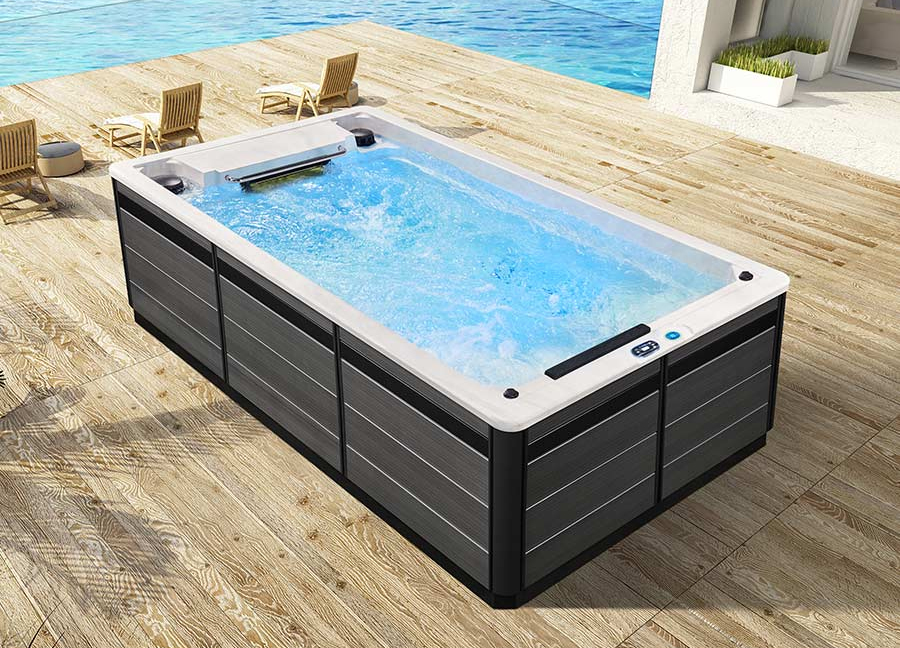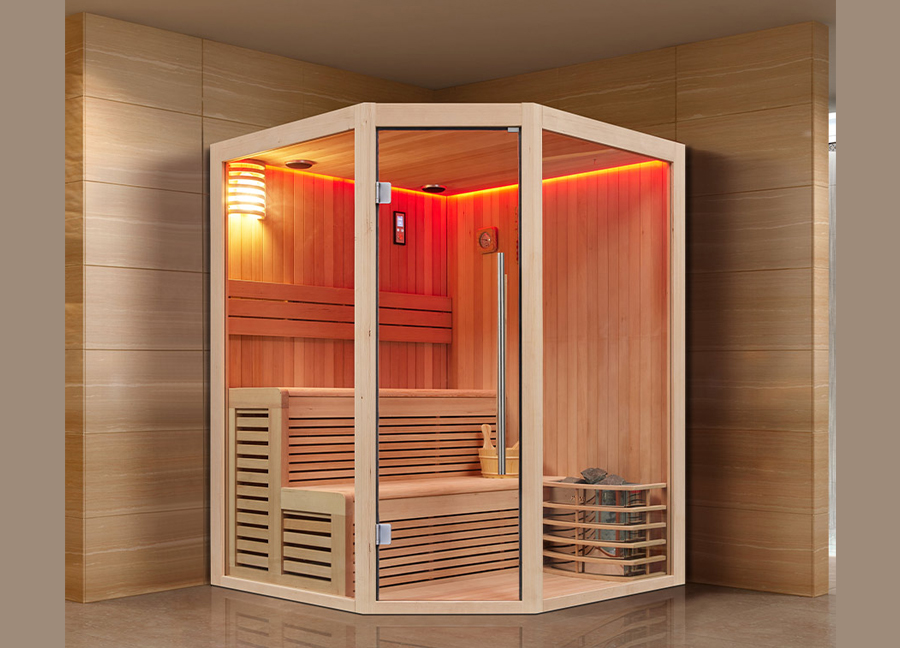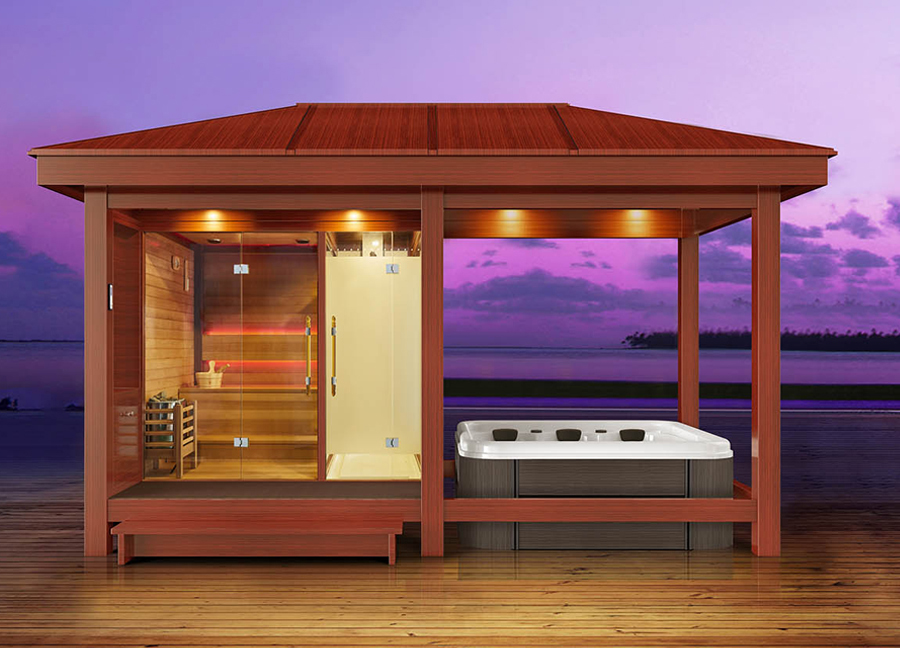A whirlpool spa hot tub is a spa device that combines comfort, relaxation, and wellness. It effectively relieves muscle tension, promotes blood circulation, and reduces stress, making it widely used in homes, gyms, and spas.
Many users, while enjoying the warm water and massage functions, neglect a crucial issue—regular disinfection of the whirlpool spa hot tub.
No matter how advanced the equipment, without proper disinfection and maintenance, the internal system of a whirlpool spa hot tub will become a breeding ground for bacteria, algae, and biofilm.
This not only leads to deteriorating water quality but can also cause skin infections or respiratory problems. This article will provide you with scientific, systematic, and practical answers from a professional perspective.
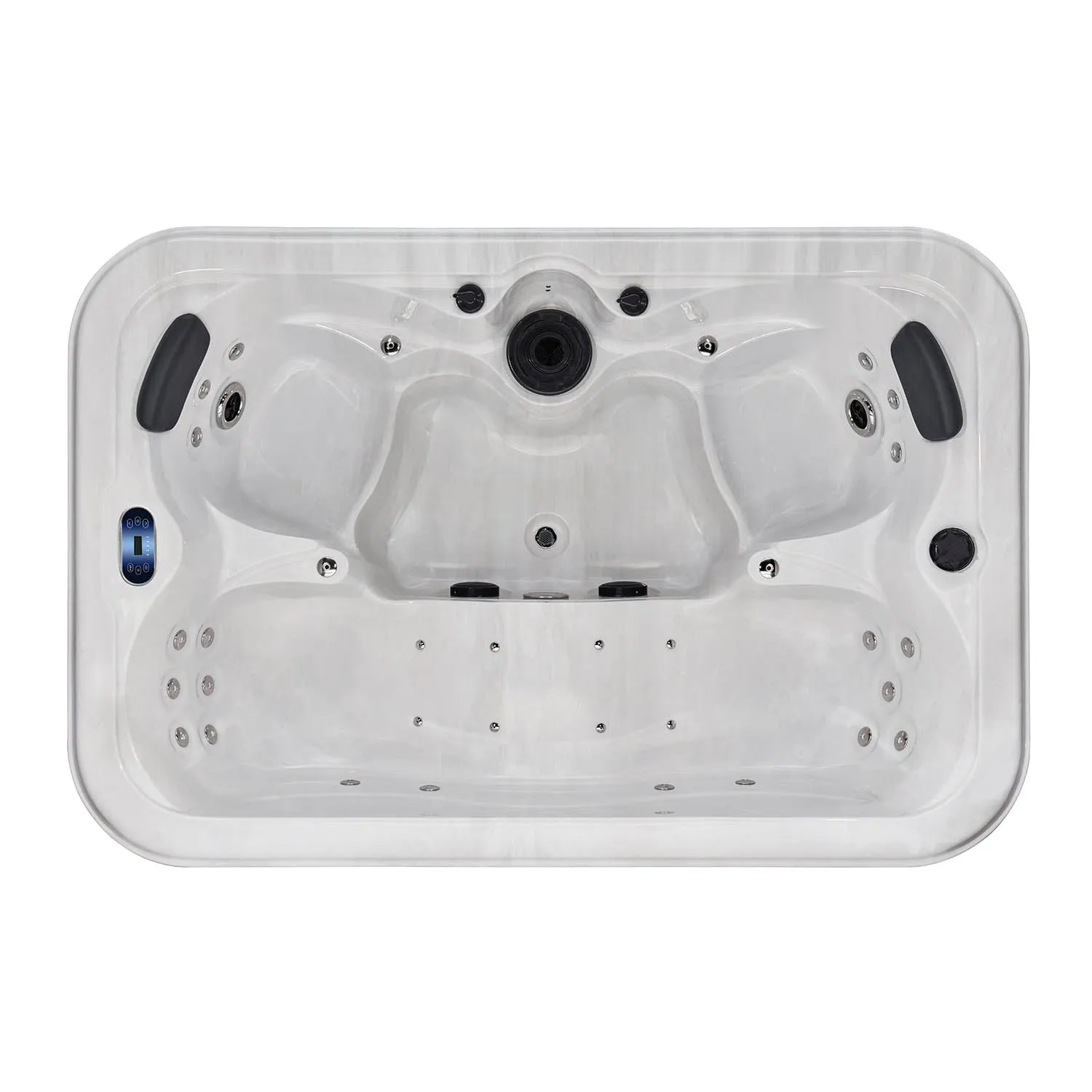
Why must a whirlpool spa hot tub be disinfected regularly?
Unlike ordinary bathtubs, whirlpool spa hot tubs have a complex circulation and jet system. The continuous circulation of hot water allows skin residue, oil, sweat, and cosmetics to easily enter the water. The temperature is typically maintained between 37°C and 40°C, providing ideal conditions for bacterial growth. The Importance of Whirlpool Spa Hot Tub Disinfection:
1. Prevents Bacterial Growth
Common bacteria include Pseudomonas aeruginosa and Legionella, which can cause "whirlpool spa hot tub syndrome" or respiratory infections.
2. Maintains Water Clarity
Disinfectants break down organic matter and grease, preventing the water from becoming cloudy or developing an odor.
3. Protects the Circulation System Equipment
If bacteria and algae proliferate in the pipes, they form a biofilm, leading to nozzle blockage and reduced pump efficiency.
4. Ensures User Health and Safety
Regular disinfection can reduce problems such as skin itching, eye irritation, and respiratory discomfort.
Therefore, cleaning the whirlpool spa hot tub is not only a matter of appearance but also a core aspect of maintaining health and safety.
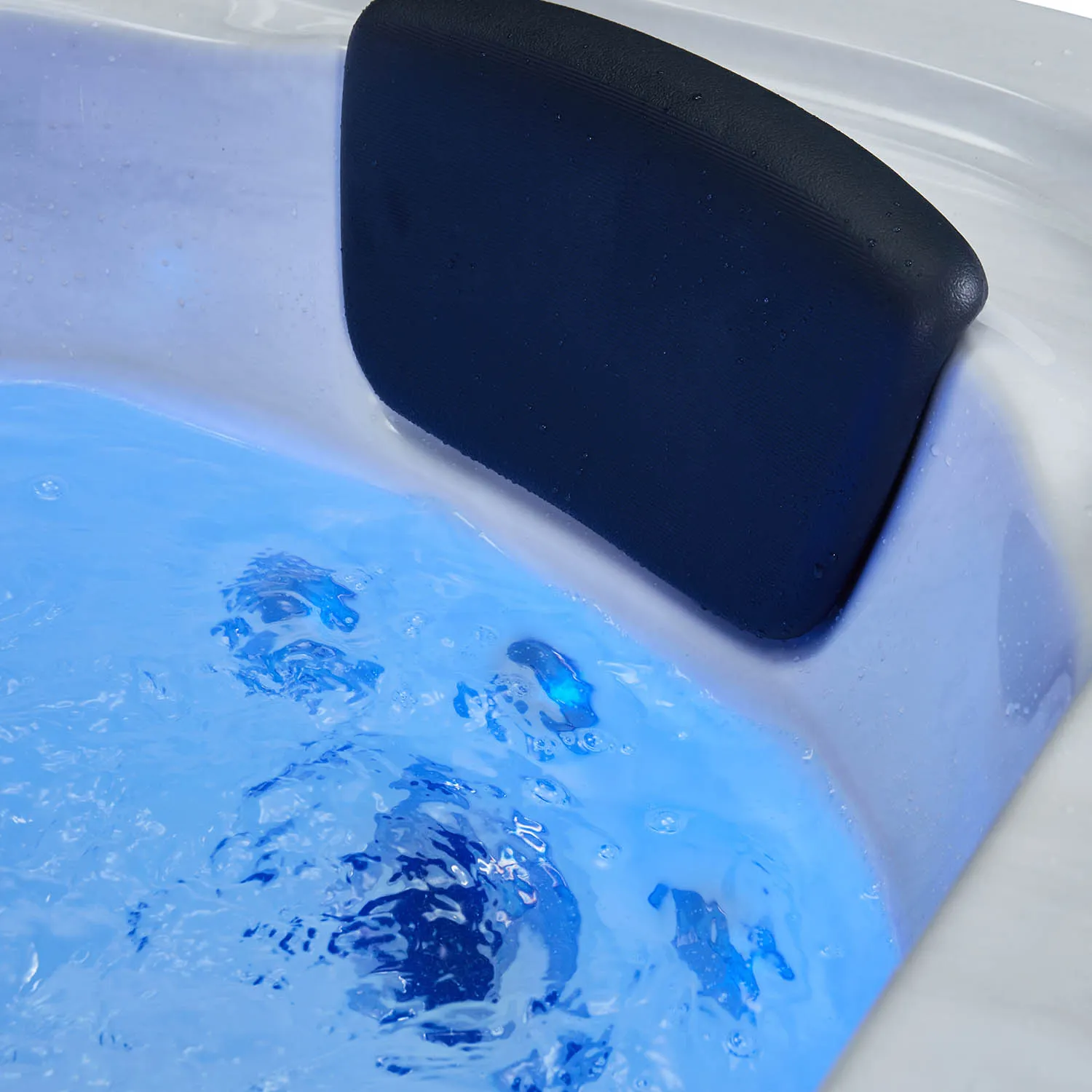
How frequently should the whirlpool spa hot tub be disinfected? What are the scientific standards?
These are the questions most users are most concerned about. In fact, the frequency of disinfection for a whirlpool spa hot tub depends on several key factors:
• Frequency of use
• Number of users
• Water volume and circulation system design
• Whether chlorine or bromine tablets are used to maintain daily water quality
Based on international spa equipment hygiene standards and industry experience, the following is generally recommended:
Usage Types | Recommended Disinfection Frequency | Water Change Cycle |
Home Whirlpool Spa Hot Tub (Use 1–3 times per week) | Disinfect once a week | Change water every 2–3 weeks |
Home Whirlpool Spa Hot Tub (Daily Use) | Disinfect once every 2-3 days | Change water every 1–2 weeks |
| Commercial Whirlpool Spa Hot Tub (Multiple Users) | Disinfect daily | Replace a portion of the water daily or after each use |
| Restart after prolonged inactivity | Thoroughly clean and disinfect before use | - - |
In other words:
For ordinary household users, thorough disinfection at least once a week is a basic requirement for maintaining water quality safety.
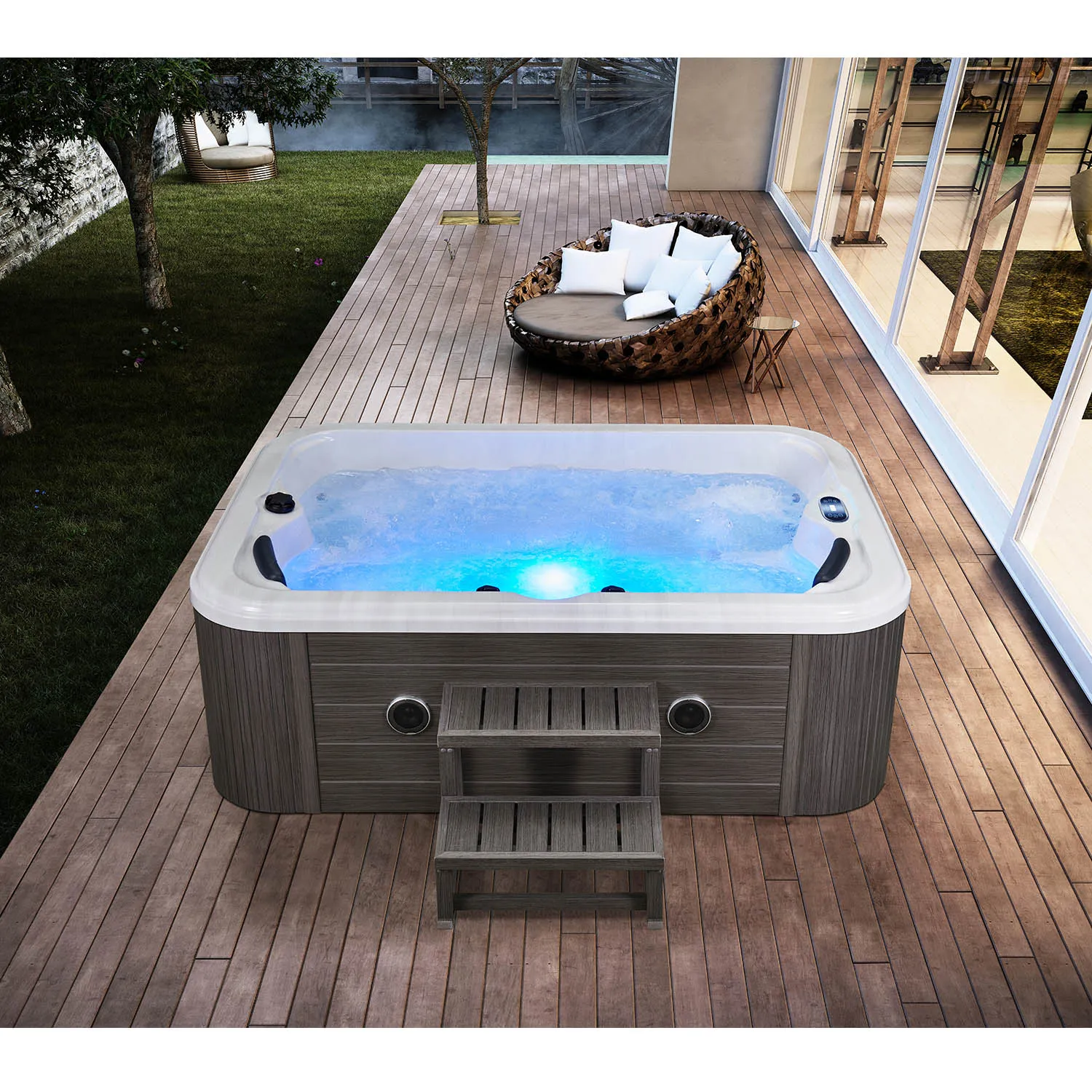
What is the difference between routine and deep disinfection?
Understanding different levels of disinfection helps in developing a more reasonable maintenance plan. Whirlpool spa hot tub disinfection can generally be divided into two types:
1. Regular Sanitation
The main goal is to maintain water balance and inhibit bacterial growth.
The procedure includes:
• Adding an appropriate amount of chlorine or bromine tablets after each use;
• Testing chlorine concentration (1.5–3 ppm) and pH value (7.2–7.6) every 2–3 days;
• Removing floating debris using a filter.
This type of disinfection is considered light maintenance, ensuring the water remains clean and clear in the short term.
2. Deep Cleaning & Disinfection
This is a more thorough cleaning method and is recommended every 2–4 weeks.
The procedure includes:
• Draining all water;
• Cleaning nozzles, pipes, and interior walls with a whirlpool spa hot tub cleaner;
• Circulating and rinsing with a high-concentration disinfectant (such as a chlorine-based cleaner) for 10–15 minutes;
• Rinse off any remaining chemicals and refill with water.
Deep cleaning effectively removes biofilm and sediment, preventing systemic contamination.
What happens if I don't disinfect my whirlpool spa hot tub regularly?
The consequences of neglecting disinfection go beyond just cloudy water. Over time, water quality deterioration can lead to the following chain reactions:
1. Bacterial and Algal Growth
In hot water environments, Pseudomonas aeruginosa, Legionella, and mold can proliferate rapidly.
2. Skin and Respiratory Irritation
Users may experience symptoms such as itchy skin, red and swollen eyes, and throat discomfort.
3. Unpleasant Water Odor
Chloramine reacts with organic matter to produce a pungent odor.
4. Degraded Equipment Performance
Nose clogging, increased pump load, and shortened motor life.
5. Potential Health Risks
Unclean water can cause "whirlpool spa hot tub syndrome," skin infections, and even respiratory illnesses.
Therefore, regular disinfection is not only about comfort but also about safe use.
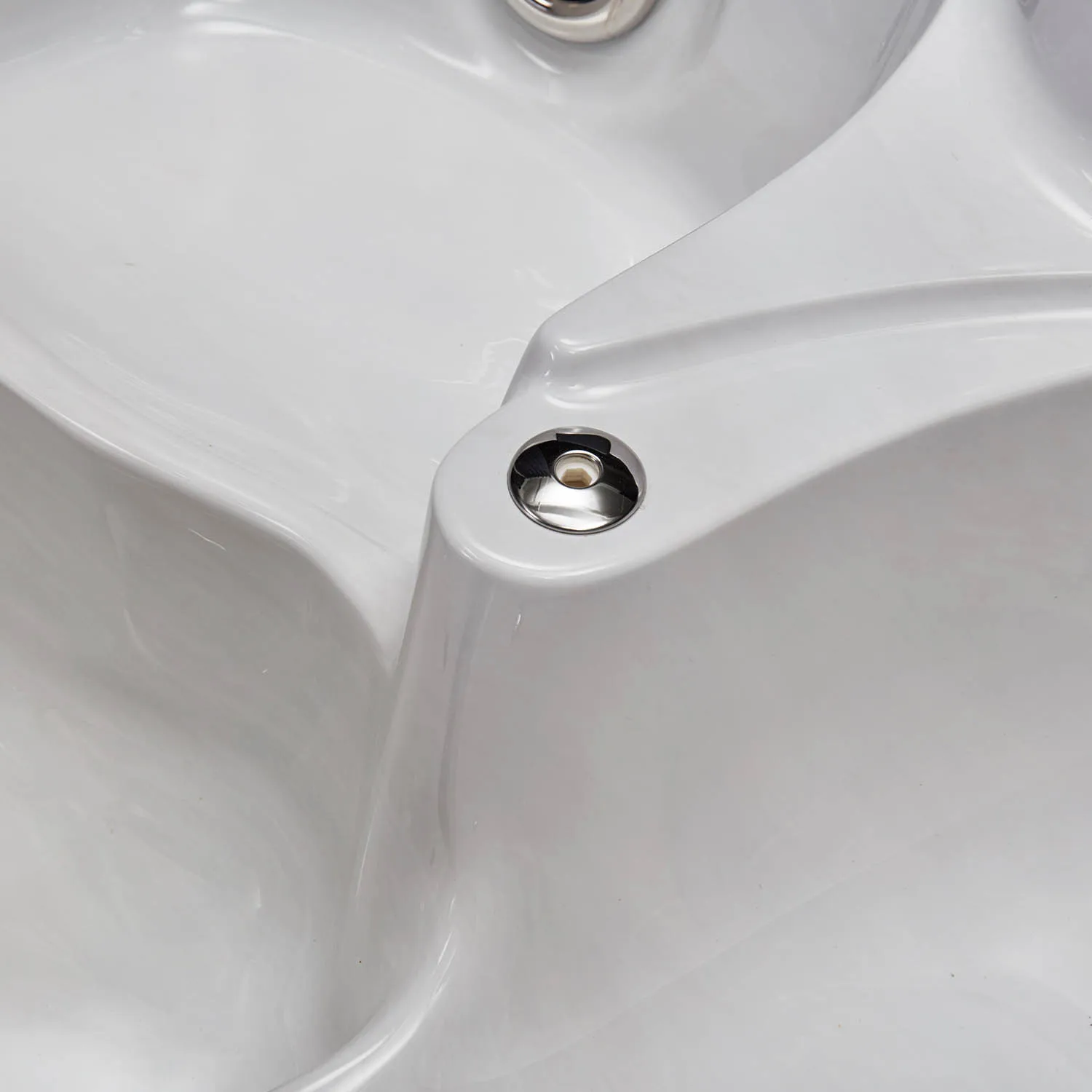
What are the disinfection methods for whirlpool spa hot tubs?
To maintain good water quality, scientific and systematic disinfection methods must be used. The following are common and effective methods:
1. Chlorine Tablet Disinfection
• One of the most commonly used methods.
• Add 1–2 chlorine tablets per 1000 liters of water.
• Maintain an effective chlorine concentration of 1.5–3 ppm.
Advantages: Strong bactericidal power, low cost.
Note: Excessive chlorine can irritate the skin; the concentration should be monitored regularly.
2. Bromine Tablet Disinfection
• Suitable for whirlpool spa hot tubs in high-temperature environments.
• Bromine is more stable at high temperatures and has less irritation.
• Maintain bromine concentration at 3–5 ppm.
3. Ozone System Assistance
Ozone has strong bactericidal power and can be used in conjunction with chlorine or bromine to reduce the amount of chemical agents used.
However, its bactericidal effect is short-lived and still needs to be combined with other disinfection methods.
4. Ultraviolet Sterilization System
Installed in the circulation system, it can directly kill bacteria as water flows through.
It needs to be used in conjunction with chemical disinfectants to prevent residual contamination in dead corners.
How frequently should water quality testing be performed on a whirlpool spa hot tub?
Water quality testing is a key indicator for determining whether re-disinfection is necessary. Recommended tests include:
• Chlorine or bromine concentration
• pH value
• Alkalinity
Recommendations for home use:
• Test 2–3 times per week, and daily for high-frequency use.
• If the chlorine concentration is found to be below 1 ppm, disinfectant should be added immediately.
Maintaining water balance not only prevents bacterial growth but also extends the life of the equipment.
What are some common misconceptions about cleaning and disinfecting?
Many users have some misconceptions about maintaining their whirlpool spa hot tubs, which can actually reduce disinfection effectiveness.
❌ Changing the water only without disinfecting: Biofilm remains inside the pipes, and simply changing the water cannot eradicate bacteria.
❌ Adding more chlorine tablets is not necessarily better: Excessive chlorine can irritate skin and corrode metal parts.
❌ Cleaning only visible areas: The inside of the pipes and nozzles is where bacteria primarily hide.
❌ Not changing the filter for a long time: A saturated filter is not only ineffective but can also back-pollute the water.
The correct approach is a combination of chemical disinfection, mechanical filtration, and regular deep cleaning.
How to determine if your whirlpool spa hot tub needs immediate disinfection?
The following signs indicate unhealthy water quality and require immediate thorough disinfection:
1. Turbidity or floating debris;
2. Unusual or sour odor;
3. Excessive foaming on the surface;
4. Skin itching or stinging after use;
5. Uneven water flow or reduced spray volume.
If any of these occur, immediately:
1. Drain the tub;
2. Clean the filter and pipes;
3. Refill and thoroughly disinfect.
Regular Disinfection is Fundamental to the Healthy Operation of a Whirlpool Spa Hot Tub
The frequency of disinfection for a whirlpool spa hot tub depends on usage intensity and water quality.
However, regardless of the situation, the following basic principles should be followed:
• Perform thorough disinfection at least once a week;
• Monitor or maintain appropriate chlorine/bromine concentrations daily;
• Change the water and clean the piping system every 2–3 weeks;
• Keep the filtration system clear and prevent scale buildup in dead spots.
Scientific and regular disinfection maintenance not only extends the life of the equipment but also ensures a safe and comfortable soak every time. A clean, balanced, and hygienic whirlpool spa hot tub is the true source of relaxation and wellness.
Can you help design exclusive models for our market?
Yes. If you want an exclusive brand model of a steam bathroom or outdoor spa tub, we can co-develop it with you. Our R&D team designs unique shapes, seating, and features not available in standard catalogs.
With OEM customization, you gain exclusivity in your market at competitive factory prices. This approach helps you stand out and strengthen your local sales network.

